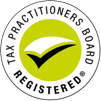Family trusts can be a very tax effective way of managing wealth, and a useful part of an overall strategy for wealth accumulation and asset protection.
What is a family trust?
The term family trust refers to a discretionary trust set up to hold a family’s assets or to conduct a family business. Generally, they are established for asset protection and tax purposes.
A trust is established by a person called the settlor” and a trustee is appointed to hold the trust assets on behalf of the beneficiaries. The trustee can either be a person or a company.
Beneficiaries have no right to the assets owned by the trust, which are controlled by the trustees who run the trust according to the rules laid down in the trust deed. Income is distributed at the absolute discretion of the trustees.
Family trust election
Where a family trust has incurred a loss in a particular year, or in certain situations is in receipt of franked dividends, it needs to make a ‘family trust election’ in order to recoup the loss in a future year.
If this election is made, distributions may only be made to beneficiaries who are within ‘the family group’. This can include a broad list of relatives within two generations.
A consequence of making a family trust election is that any distributions outside the family group of the family trust is taxed at the top marginal rate plus the Medicare levy (currently 46.5%).
Streaming net income
Income streaming is where the trustee resolves to make specific distributions of net income to specific beneficiaries. The trust deed must allow the trustee to attribute distributions in this way, the accounting records of the trust must separate the trust income and the administration and management of the trust must be consistent with this attribution and allocation.
Importantly, the distribution minutes must be drafted consistently with such attribution and allocation.
Some uncertainty has surrounded trusts recently regarding “income streaming”. This has now been largely cleared up with the Government passing legislation allowing streaming of capital gains and franked distributions for the 2011 and future financial years.
The Government has also announced that it will undertake a complete rewrite of the tax law dealing with trusts in an effort to provide greater certainty to trustees and beneficiaries, and this is expected to occur in the next 6 to 12 months.
Flexibility
Unlike self managed superannuation funds (SMSFs), trusts have no contribution limits, can hold assets for future generations, and there are usually no restrictions on what a trust can invest in or on how much it can borrow (unless specified by the trust deed).
In addition, beneficiaries of trusts don’t need to wait for retirement to sell assets and access cash (i.e. the money is not locked away.
When the person who set up or controls the trust dies, this control can be easily transferred to the next generation with no immediate tax consequences. With an SMSF, a member’s death can trigger a taxable capital gain for his or her beneficiaries.
Asset protection
Family trusts can provide protection for family and business assets particularly in circumstances of business failure. When assets are owned by a trust, it can be difficult for creditors to gain access to them, so trusts can be a very attractive option for small business owners.
Tax advantages
Trusts are most beneficial when one family member is on the top marginal tax rate. Instead of owning assets in that person’s name and paying the top tax rate on income they generate, the investments can be owned by the trust and income distributed to lower income earners in the family.
Preparing distribution minutes
The days of completing generic minutes without particular regard to the trust deed are now over. Distribution minutes be carefully considered and prepared taking into account, among other things, the provisions of the trust deed, recent case-law and ATO practice.
Sham transactions
The ATO and the courts can consider as ‘shams’ various actions purporting to be valid distributions of trust income. These include, for example, distributions made to beneficiaries that are unaware of their entitlement, distributions made invalidly and distributions made by journal entry where there is no intention at all to pay this out in cash.
Drawbacks
The main drawback of a trust is the possibility of family disagreements about who is in charge. There can also be complications in estate planning.
Trust assets do not form part of an estate. For example, a beneficiary might indicate in a will that any distribution from a trust go one way, whereas the trustees might decide to send it another way as they have a duty to act in the interests of all beneficiaries.
Perhaps the best approach is to use a combination of a trust and an SMSF to manage wealth. Superannuation has its virtues until contributions caps cut in, at which point family trusts may become a good option.




